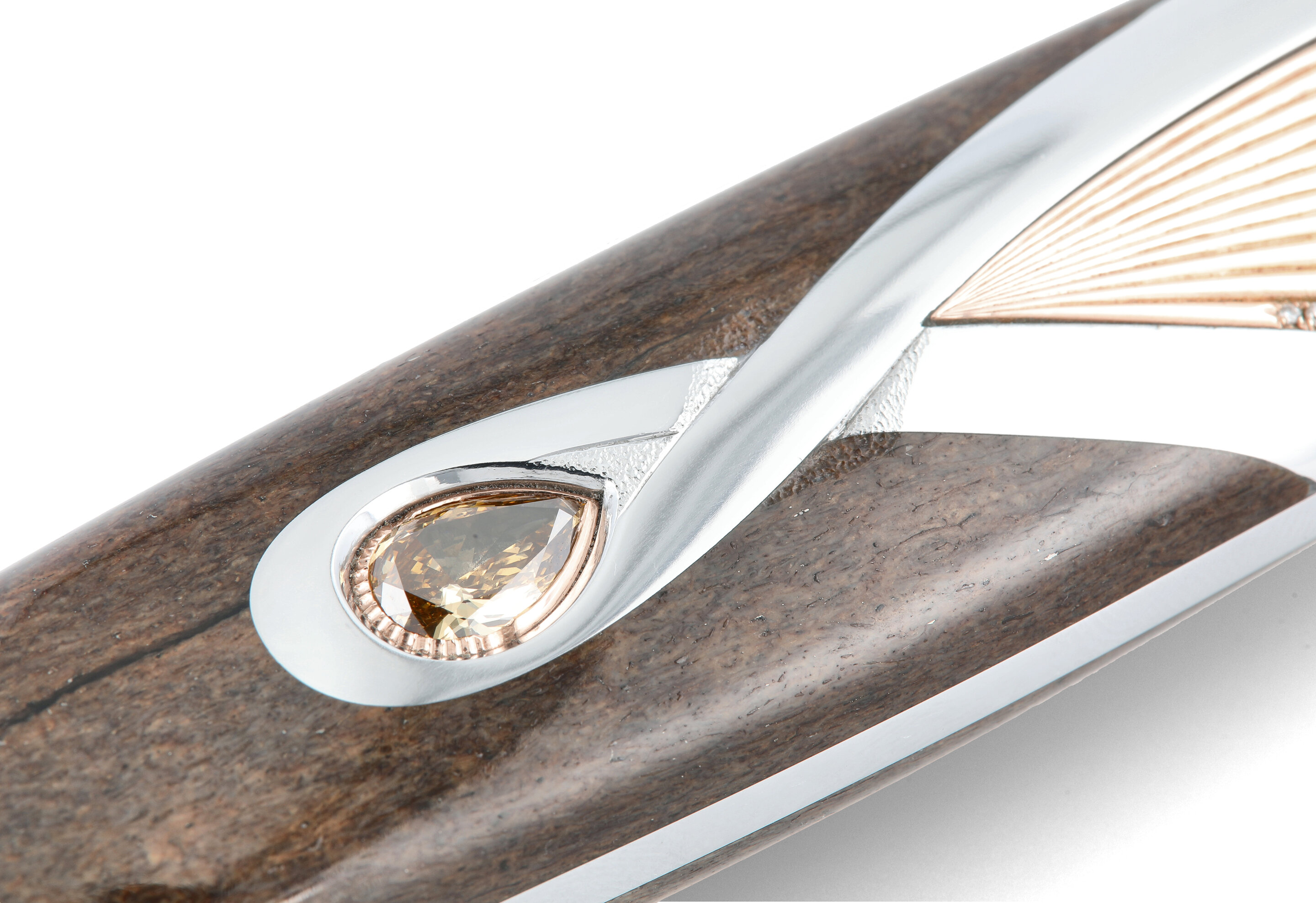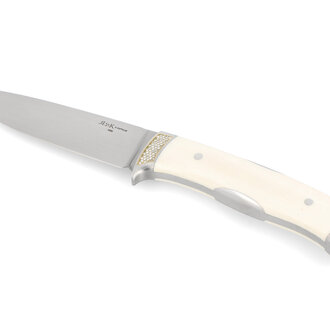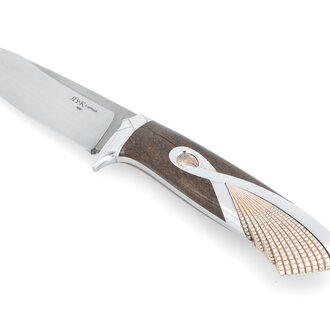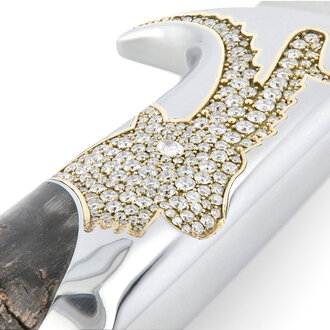
Knives and Diamonds
Sparkling decorations
Gemstones such as diamonds have been used for centuries to decorate objects of art, including knives and other weapons. The settings are prepared in such a way that the stones can be removed undamaged, allowing special jewels to safely be repurposed if necessary. Diamonds lend extraordinary value and uniqueness to a knife. When masterfully set, their brilliance and colour transform a knife into a work of art that transcends generations.
Diamond Facts
Diamonds are the hardest naturally occurring material. Composed of carbon that has crystallised under extreme pressure, the stone boasts a density of 3.515g/cm³. A high refractive index (approx. 2.42) lends diamonds their singular brilliance, and a moderate dispersion (approx. 0.044) their characteristic fire. With the optimal cut, a diamond can be made to sparkle in all the colours of the rainbow. Cut diamonds are classified according to the four Cs:
- Carat
Denotes the weight of the stone, with one carat being equivalent to 0.2 grams. Since large stones are very rare, the price does not increase linearly with weight. The largest diamonds are typically auctioned off, with some bearing world-famous names and gracing the collections of emperors and kings.
- Colour
Colour is measured according to an international scale using letters ranging from D to Z (“D” for completely colourless, “O” for noticeable colour, and so on). The more colourless a diamond, the more valuable it is. Very rare stones with particularly intense colours known as fancy diamonds, however, can achieve even higher prices.
- Clarity
Refers to the nature and size of inclusions that can affect brilliance. The clearer and purer the stone, the rarer and more valuable it is. The scale ranges from “flawless” (absolutely clear at 10x magnification) to “piqué” (visibly cloudy).
- Cut
The cut is crucial in bringing out a diamond’s brilliance and fire. Only with perfectly cut facets and the right proportions can a stone reflect light optimally and shine with its full potential.




